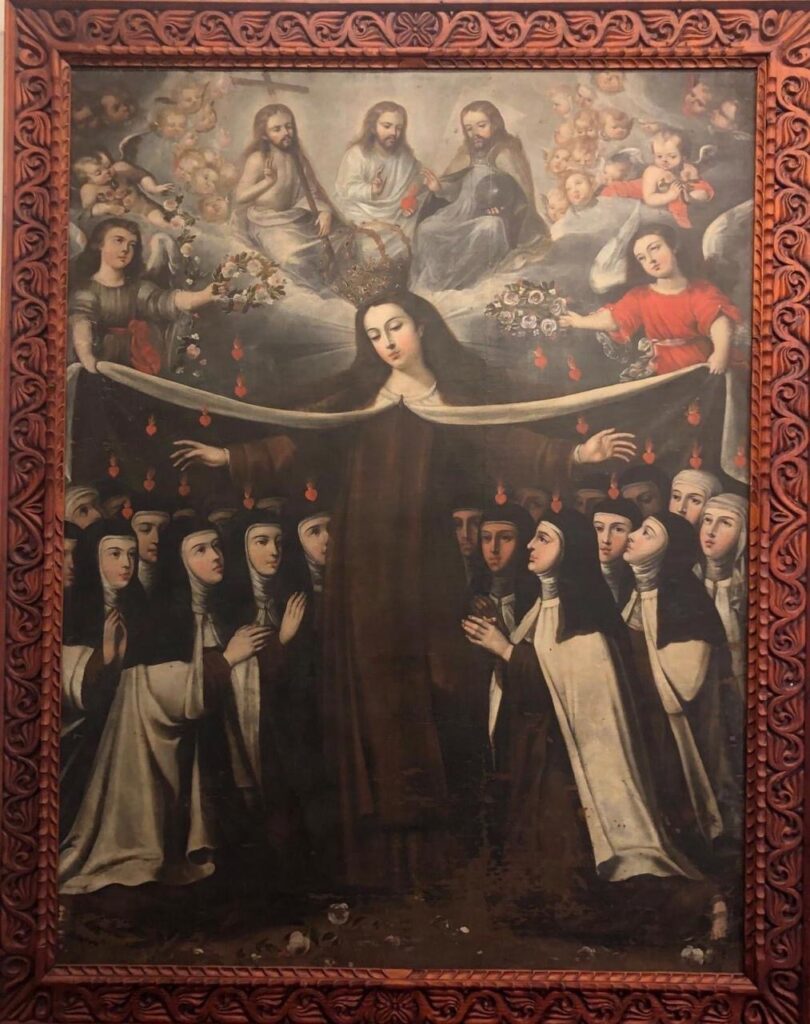Isabel de Santiago, nacida en Quito en la segunda mitad del siglo XVII, fue hija del célebre pintor Miguel de Santiago y heredera de su taller. A pesar de que por ser mujer no pudo obtener títulos oficiales como pintora profesional, se ganó el respeto de su tiempo gracias a su delicadeza y talento artístico. Tras la muerte de su padre en 1706 y la de su esposo Antonio Egas, continuó pintando para cumplir encargos y pagar deudas familiares, alcanzando reconocimiento en la sociedad quiteña, donde incluso uno de sus lienzos podía servir como pago de grandes obligaciones.
Su estilo se caracterizó por la luminosidad, la abundancia floral y la presencia de pequeños animales, lo que aportaba frescura y sensibilidad a sus obras. Entre sus trabajos más destacados se encuentran el retrato de Sor Juana de Jesús, El hogar de Nazareth y El arcángel Gabriel. También colaboró con su padre en piezas importantes como La Virgen de las Rosas y La Virgen de las Flores. Isabel de Santiago falleció en 1714 en Quito, dejando un legado artístico que consolidó la presencia femenina en la Escuela Quiteña.

Isabel de Santiago, born in Quito in the second half of the 17th century, was the daughter of the famous painter Miguel de Santiago and heiress to his studio. Although, as a woman, she was unable to obtain official titles as a professional painter, she earned the respect of her time thanks to her delicacy and artistic talent. After the death of her father in 1706 and that of her husband Antonio Egas, she continued painting to fulfill commissions and pay off family debts, achieving recognition in Quito society, where even one of her canvases could serve as payment for large obligations.
Her style was characterized by luminosity, an abundance of flowers, and the presence of small animals, which brought a freshness and sensitivity to her works. Among her most notable works are the portrait of Sor Juana de Jesús, The Hearth of Nazareth, and The Archangel Gabriel. She also collaborated with her father on important pieces such as The Virgin of the Roses and The Virgin of the Flowers. Isabel de Santiago died in 1714 in Quito, leaving behind an artistic legacy that consolidated the female presence in the Quito School.
